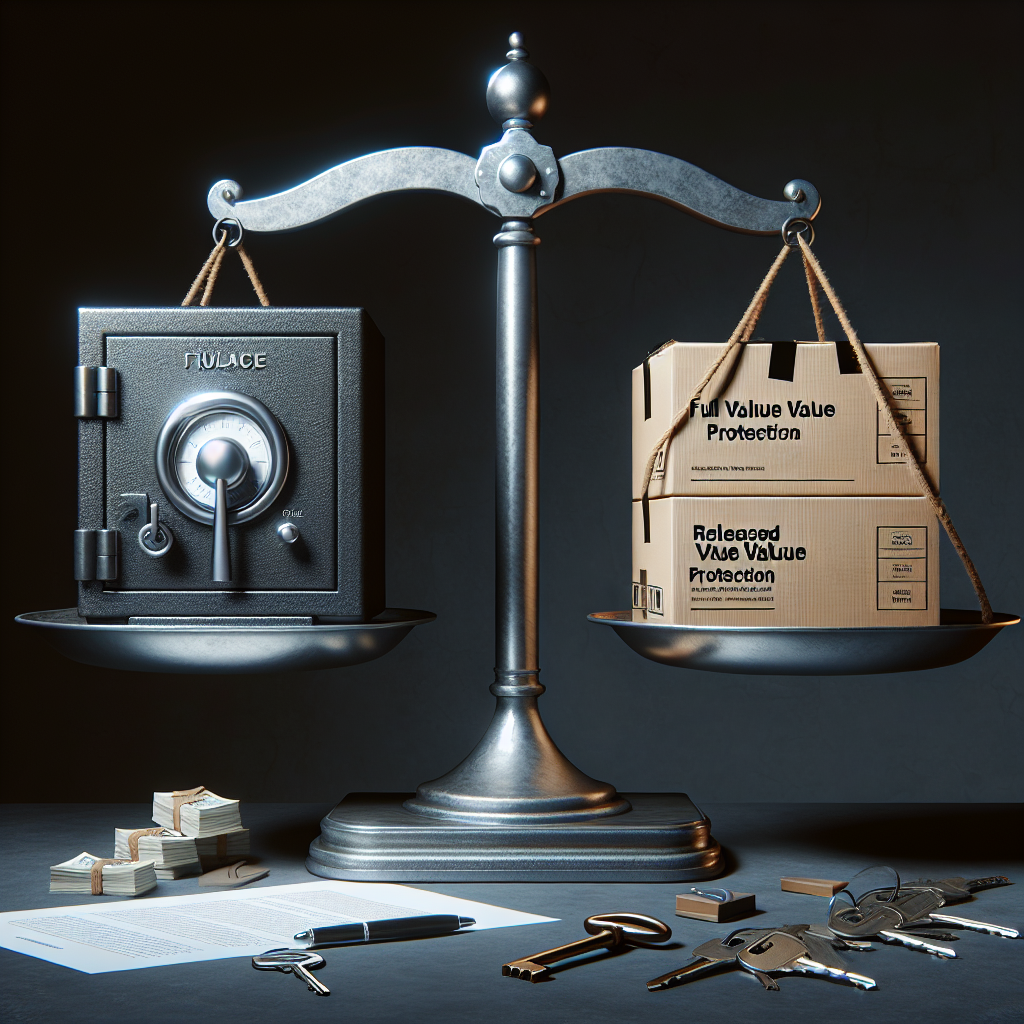When moving to a new home, one of the key considerations often overlooked is the protection of your belongings. Among the myriad of options available, understanding the difference between Full Value Protection and Released Value Protection can significantly ease your mind. Whether you are relocating across town or across the country, it’s crucial to ensure that your precious items arrive safely. In this guide, we will break down these types of moving insurance in a relatable and uncomplicated way.
What is Moving Insurance?
Moving insurance is a form of coverage that protects your possessions while they are in transit. Unlike traditional homeowners or renters insurance, moving insurance specifically addresses the unique risks associated with relocating. It can compensate you for damage, loss, or theft of your items during the moving process.
Why You Need Moving Insurance
Even the most meticulously planned moves can experience hiccups. Accidents happen, and damage to your items can occur due to unforeseen circumstances. Moving insurance provides peace of mind, ensuring you won’t face financial loss due to mishaps beyond your control.
Full Value Protection: Comprehensive Coverage
What is Full Value Protection?
Full Value Protection (FVP) is the most comprehensive level of coverage offered by moving companies. Under this policy, the moving company is responsible for the total value of items that are lost or damaged during the move. If something goes wrong, the mover will either repair the item, replace it with a similar item of equal value, or pay you the item’s current market value.
How Does it Work?
For Full Value Protection, the mover will assess the value of your belongings, typically requiring you to create an inventory of items. Based on this inventory, you will either receive a valuation or have to pay an extra fee on top of the standard moving cost. If a valued item is lost or damaged, you’ll be compensated accordingly.
Pros of Full Value Protection
- Peace of Mind: You can breathe easy knowing that your items are well protected.
- Higher Compensation: You receive the full replacement value of your belongings.
- Enhanced Responsibility: The moving company takes on greater liability, motivating them to handle your items with care.
Cons of Full Value Protection
- Cost: This level of protection typically comes with a higher price tag.
- Paperwork: Requires detailed inventory, which can be time-consuming to prepare.
Released Value Protection: Basic Coverage
What is Released Value Protection?
Released Value Protection (RVP) offers a more economical solution for those who do not want to pay a premium for extensive coverage. Under this policy, the mover’s liability is limited to $0.60 per pound per item. In the event of damage or loss, you’re paid based on the weight of the items rather than their value.
How Does it Work?
For released value coverage, the service is provided at no additional charge, and you won’t need to provide an inventory list. In case of a claim, if your 50-pound TV gets damaged, you would only receive $30 in compensation (i.e., 50 pounds x $0.60) regardless of its actual value.
Pros of Released Value Protection
- Cost-Effective: It’s often included for free, making it budget-friendly.
- Simplicity: No need for extensive paperwork or valuation of your belongings.
Cons of Released Value Protection
- Low Payout: Compensation is significantly lower than the item’s worth.
- Limited Responsibility: Less motivation for movers to handle items with care.
Choosing the Right Protection for Your Move
Assess Your Needs
When settling on a protection plan, consider the total value of your belongings and your budget. If you have high-value items, such as electronics or antiques, Full Value Protection may be worth the investment.
Evaluate Your Risk Tolerance
Consider how much risk you are willing to take. If your items are irreplaceable or you can’t afford to lose them, FVP is the safest option. Conversely, if you have mostly low-value items, RVP could suffice.
Speak With Your Mover
Before making any decisions, have an in-depth discussion with your moving company. They can help clarify the specifics of each coverage option and guide you based on your unique needs.
Conclusion
Understanding Full Value Protection and Released Value Protection is vital when navigating the ins and outs of moving insurance. While Full Value Protection offers peace of mind with comprehensive coverage, Released Value Protection provides a cost-effective alternative that may work for those with less valuable items. Ultimately, the choice depends on your financial situation, the value of your belongings, and your risk tolerance. By weighing the pros and cons carefully, you can make an informed decision that ensures your move remains as stress-free as possible.
Get Ready for Your Move!
As you prepare for your big move, make sure you don’t overlook the importance of moving insurance. An informed choice will not only protect your belongings but also provide you with the confidence to embrace your new beginnings. Whether you go for Full Value Protection or Released Value Protection, rest assured that you’re one step closer to a smooth transition into your new home!


